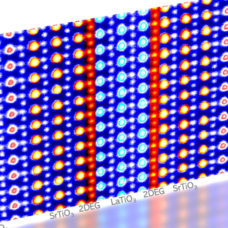Researchers have developed a device called a memtransistor that could perform brain-like functions.
Researchers from the McCormick School of Engineering at Northwestern University in Illinois have created a new device that can supposedly execute neutral functions just like the brain. Dubbed as the memtransistor, it reportedly combines the characteristics of a memristor and a transistor.
“Computers have separate processing and memory storage units, whereas the brain uses neurons to perform both functions,” Mark C. Hersam, co-author of the study, said. “Neural networks can achieve complicated computation with significantly lower energy consumption compared to a digital computer.”
Read More: Neuromorphic Chip That Simulates Brain Activity Developed by Researchers
Apparently, what Hersam and his colleagues have accomplished is another breakthrough in the field of neuromorphic study.
This is a milestone that could potentially bring scientists closer to creating a supercomputer with brain-like capabilities and efficiency.
According to the researchers, the memtransistor is composed of multiple terminals and works similarly to a neural network.
This enables it to operate like a neuron and perform brain tasks such as memory and information processing.
@NorthwesternU researchers developed a new device called memtransistor that could revolutionize #Neuromorphic computing.Click To TweetWhat is a Memtransistor?
The memtransistor was built based on the previous work of the same group of researchers published in 2015. Hersam and his colleagues reportedly used a single-layer of molybdenum disulfide (MoS2) to make a “three-terminal, gate-tunable memristor” that can serve as a fast and reliable digital memory storage.
The memristor, short for memory resistor, is a resistor that has the capacity to remember the voltage previously applied to it.
Usually, memristors are two-terminal electronic devices that can only control one voltage channel.
However, by turning it into a three-terminal device, the memristor could now be used in highly sophisticated electronic circuits or systems like neuromorphic computing.
For the team to develop the memtransistor, they used “atomically” thin MoS2 with well-defined grain boundaries that affected the current flow. With this design, the atoms are arranged in ordered domains called grains inside the material.
The grain materials enable atomic motion, which causes a change in the resistance of the material when high-voltage is applied.
“Because molybdenum disulfide is atomically thin, it is easily influenced by applied electric fields. This property allows us to make a transistor. The memristor characteristics come from the fact that the defects in the material are relatively mobile, especially in the presence of grain boundaries,” Hersam explained.
The new memristor used in the memtransistor device uses a continuous film of polycrystalline which is composed of numerous smaller flakes of MoS2.
This is a far cry from the old memristor design which only has individual small flakes of MoS2. This made it easier for the researchers to scale up the device to span across an entire wafer.
“When the length of the device is larger than the individual grain size, you are guaranteed to have grain boundaries in every device across the wafer,” Hersam went on to say. “Thus, we see reproducible, gate-tunable memristive responses across large arrays of devices.”
In their new study published in the journal Nature, Hersam and his colleagues developed a seven-terminal memristor, one of which controls the other six terminals. This, according to Hersam, made their memtransistor more similar to brain neurons.
“This is even more similar to neurons in the brain because in the brain, we don’t usually have one neuron connected to only one other neuron. Instead, one neuron is connected to multiple other neurons to form a network. Our device structure allows multiple contacts, which is similar to the multiple synapses in neurons,” he said.
Hersam believes that their invention could someday become a “foundational circuit element” for new forms of neuromorphic computing.
The team’s next plan is to make the memtransistor smaller and faster. They are also working on making the device scalable for future manufacturing.


















Comments (0)
Least Recent